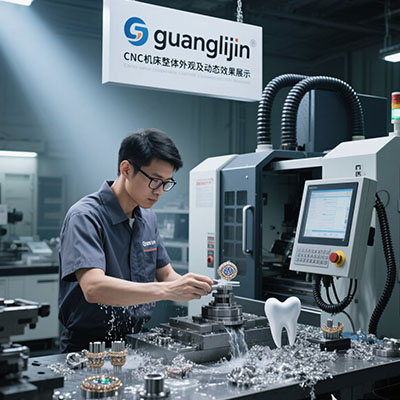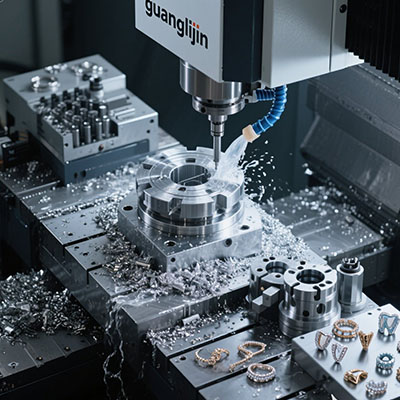Best 4 Axis CNC Mini Mill Solutions for Metalworking
The Metalworking Challenge for Small Shops
Small manufacturers face unique metalworking challenges. Space constraints limit equipment options. Budget restrictions compound these issues.
Complex metal parts require multi-axis capability. Traditional 3-axis machines fall short. They need multiple setups for intricate geometries.
This increases errors and production time. Part accuracy suffers significantly. Rejection rates climb unnecessarily.
Why 4-Axis Mini Mills Transform Metal Fabrication
Compact 4-axis technology revolutionizes small-scale metalworking. The rotational axis enables complete part access. Complex features become achievable in single setups.
These machines offer remarkable precision in small packages. A quality 4 axis cnc mini mill delivers industrial-grade accuracy. This makes professional results accessible to smaller operations.
According to SME’s 2023 report, shops using 4-axis automation saw 45% faster turnaround times. This demonstrates real productivity gains.
Real-World Success: Aerospace Bracket Production
Our team worked with an aerospace startup in late 2023. They needed complex aluminum brackets with angled holes. Traditional methods proved too time-consuming.
Implementing a 4 axis cnc mini mill changed everything. The rotary table handled precise angular machining perfectly. Production time dropped from 6 hours to just 90 minutes per part.
Surface finish quality actually improved despite faster production. This surprised even our experienced engineers.
Mini Mill Capability Comparison for Different Metals
| Metal Type | 4-Axis Mini Mill Performance | Traditional 3-Axis Limitations |
|---|---|---|
| Aluminum 6061 | Excellent for complex contours | Multiple setups required |
| Stainless Steel 304 | Good with proper tooling | Rigidity challenges |
| Brass and Copper | Ideal for detailed work | Adequate but limited |
| Titanium Grade 2 | Possible with light cuts | Not recommended |
5-Step Metalworking Process with 4-Axis Mini Mills
Step 1: Material Selection and Fixturing
Choose appropriate metal stock for your project. Secure material using vises or custom fixtures. Ensure clearance for full rotary movement.
Step 2: Tooling Strategy Development
Select carbide end mills for metal cutting. Use shorter tools for better rigidity. Consider coated tools for longer life.
Step 3: Work Coordinate Setup
Establish precise X, Y, Z zero points. Define A-axis rotation center accurately. This ensures dimensional accuracy throughout machining.
Step 4: CAM Programming for Metals
Program 4-axis simultaneous toolpaths. Optimize for metal-specific parameters. Include proper coolant strategies.
Step 5: Machining and Quality Control
Run test cuts in similar material. Measure critical features immediately. Adjust feeds and speeds as needed.
Optimal Applications for Metalworking Mini Mills
These compact powerhouses excel in specific metal fabrication areas. Their capabilities often surprise first-time users.
Prototype development benefits tremendously. Complex one-off parts become practical. Design iterations happen faster.
Educational institutions love them too. Students learn multi-axis programming safely. The smaller scale reduces risks.
Technical Considerations for Metal Cutting
Spindle power matters more than in larger machines. You need torque for metal removal. Look for 2HP minimum for steel work.
Interestingly, machine weight correlates with performance. Heavier mini mills handle vibration better. This improves surface finish in metals.
According to Modern Machine Shop data, proper tool selection improves metal removal rates by 35%. This highlights its importance.
Essential Metalworking Checklist for Mini Mills
- □ Verify coolant system functionality
- □ Check tool holder TIR (Total Indicator Runout)
- □ Confirm workholding during rotation tests
- □ Inspect first-part critical dimensions
- □ Monitor tool wear patterns regularly
- □ Validate chip clearance in deep pockets
- □ Document optimal parameters for each metal
Frequently Asked Questions
What materials can a 4 axis CNC mini mill effectively machine?
These machines handle aluminum, brass, mild steel, and plastics excellently. Some can machine stainless steel with proper tooling and parameters.
How much floor space does a typical 4 axis mini mill require?
Most models need 15-25 square feet, including operator space. Compact designs fit in small workshops or garages perfectly.
What is the learning curve for 4-axis CNC programming?
Basic operations take 2-3 weeks to master. Advanced 4-axis simultaneous programming requires 3-6 months of consistent practice.
Can mini mills handle production runs or only prototyping?
They can manage small to medium production batches effectively. Proper tool management and maintenance are crucial for consistent results.
What maintenance does a 4 axis CNC mini mill require?
Regular lubrication, belt tension checks, and way cover cleaning are essential. Rotary axis bearings need periodic inspection and adjustment.







